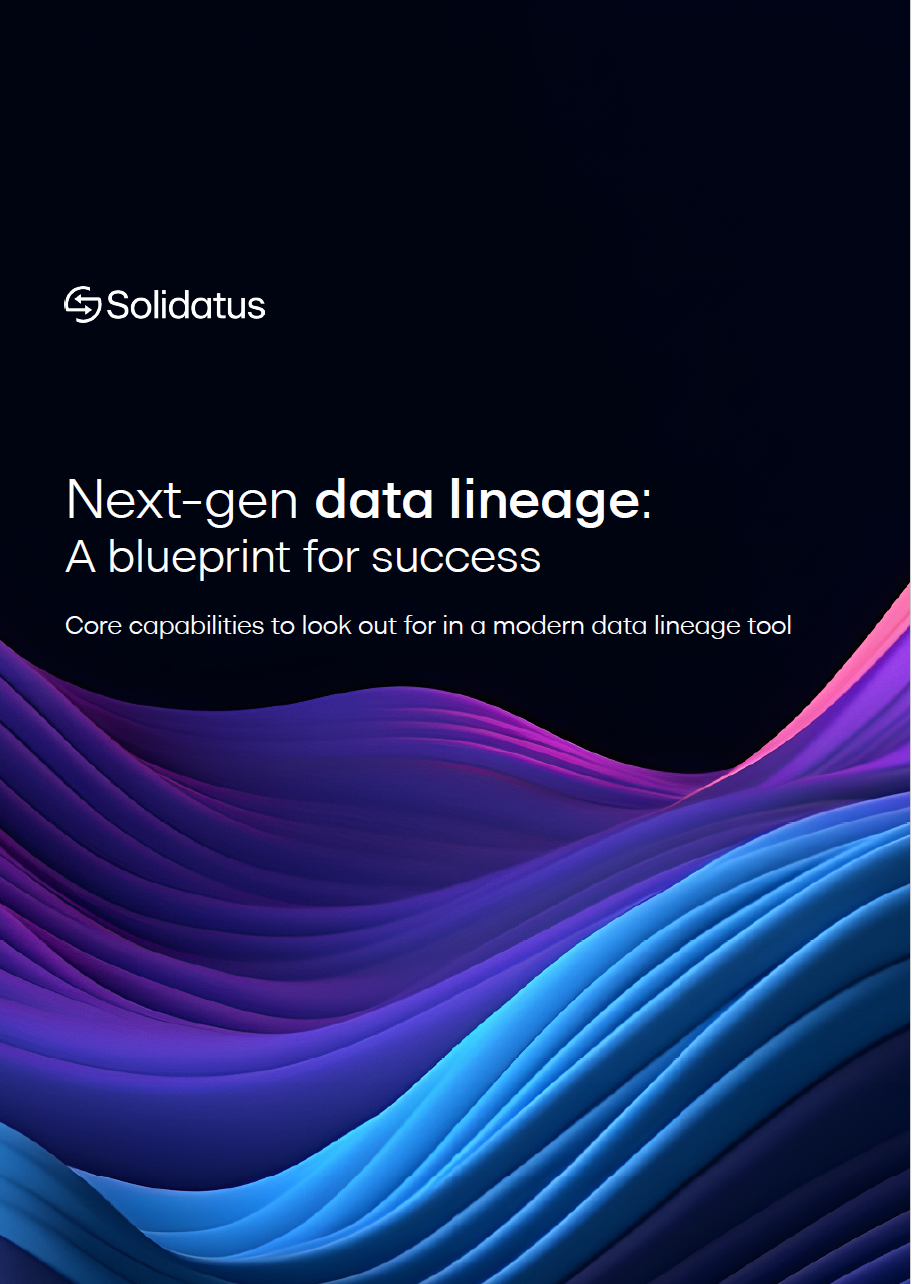Live demo: Explore our all-new interface
View our video introducing our new interface and core features like Connected Catalog and Data Map.

You’re likely familiar with data lineage – the process of tracking data’s journey from source to destination. And while its role in mapping the technical architecture of organizations is well-known, its true business value is more profound than you think. Within this whitepaper, we explore the various aspects of data lineage, highlighting its crucial role as a strategic ally for your organization.
Topics include:
Decoding data lineage
Core benefits of data lineage
Why Solidatus is the market leader in data lineage


In today’s fast-paced, data-driven world, the stakes are too high for the status quo. This session explores how leading organizations use Solidatus to align business and technical teams to achieve objectives faster and better than ever before.
Solidatus & Datactics teams discuss how they jointly implemented data governance tools to meet BCBS239 regulation in a global D-SIB bank, and learn how data quality and data lineage working together is best for managing data in motion.

New reforms target the recalculation of risk-weighted assets and limiting banks’ use of internal models for risk estimation in setting minimum capital requirements.
Systemically important banks face heightened stress testing and risk data requirements, while expanded reporting rules and risk assessments present new challenges for regional players.
Banks must interpret the new rules, assess their impact, and address emerging data and technology requirements by July 2025.


The 2017 ‘endgame’ (B3E) enhances capital calculation by modifying Basel’s approach according to activity risks. Banks have approximately two years (July 2025 for UK and US) to interpret the new rules, during which time they must address emerging data and technology requirements and adapt their business models.
Changes include:
B3E requires significant data architecture upgrades for flexible, auditable, and integrated risk quantification in line with regulatory guidance.
Financial institutions must attain high-quality data on capital, loan books, and portfolios but will struggle for the following key reasons:


Solidatus enables banks to meet Basel III simply, and efficiently.
By combining technical data lineage with business context we connect your data to the processes that create it, to the policies that guide it, and to the obligations that regulate it. The result is a ‘live’ enterprise data blueprint that clearly illustrates the impact of Basel III on every layer of your organization.
Build an enterprise data blueprint
Interrogate an evergreen, single source of truth
Automate reporting and bake in compliance by design
Watch how Solidatus tackles Basel III head-on
New reforms target the recalculation of risk-weighted assets and limiting banks’ use of internal models for risk estimation in setting minimum capital requirements.
Systemically important banks face heightened stress testing and risk data requirements, while expanded reporting rules and risk assessments present new challenges for regional players.
Banks must interpret the new rules, assess their impact, and address emerging data and technology requirements by July 2025.


The 2017 ‘endgame’ (B3E) enhances capital calculation by modifying Basel’s approach according to activity risks. Banks have approximately two years (July 2025 for UK and US) to interpret the new rules, during which time they must address emerging data and technology requirements and adapt their business models.
Changes include:
B3E requires significant data architecture upgrades for flexible, auditable, and integrated risk quantification in line with regulatory guidance.
Financial institutions must attain high-quality data on capital, loan books, and portfolios but will struggle for the following key reasons:


Solidatus enables banks to meet Basel III simply, and efficiently.
By combining technical data lineage with business context we connect your data to the processes that create it, to the policies that guide it, and to the obligations that regulate it. The result is a ‘live’ enterprise data blueprint that clearly illustrates the impact of Basel III on every layer of your organization.
Build an enterprise data blueprint
Interrogate an evergreen, single source of truth
Automate reporting and bake in compliance by design
Watch how Solidatus tackles Basel III head-on
